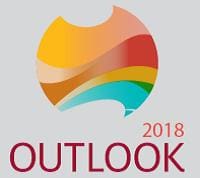 AUSTRALIA’S saleyard sheep and lamb prices, and auction wool values are expected to continue to rise, but the gross value of the nation’s agricultural production will fall 5 percent this financial year, agricultural forecaster ABARES said today.
AUSTRALIA’S saleyard sheep and lamb prices, and auction wool values are expected to continue to rise, but the gross value of the nation’s agricultural production will fall 5 percent this financial year, agricultural forecaster ABARES said today.
In its March Agricultural Commodities report released today, ABARES said Australian saleyard prices are forecast to increase by about 6pc to average 625c/kg for lamb and 440c/kg for mutton in 2017-18.
This reflected competition from restockers and processors, driven by strong demand in major export markets, particularly China.
ABARES is also forecasting the wool price benchmark, the AWEX Eastern Market Indicator, to rise by 15pc in 2017-18 and continue to increase up to 2022-23, primarily reflecting strong demand for superfine wool less than 19.5 micron.
However, ABARES said changing consumer preferences and a projected increase in exportable supplies from Australia and New Zealand are expected to place downward pressure on Australian saleyard prices.
“As a result, Australian lamb prices are projected to decline steadily to average around 576c/kg (in 2017–18 dollars).
“Despite the decline, lamb prices are expected to remain around 9pc higher than the 527c/kg averaged over the five years to 2017–18,” the forecaster said.
“Saleyard sheep prices are projected to average 426c/kg by 2022–23.”
China to lead in sheep meat demand stakes
Demand for Australian sheep meat exports is expected to remain relatively strong in 2018-19, driven mainly by income growth in China and an assumed lower Australian dollar.
ABARES expected sheep meat demand to slow in the United States and the Middle East over the medium term to 2022–23, as income growth drives increased substitution of sheep meat with beef and chicken.
However, Australian sheep meat exports to China are forecast to increase by 11pc to about 91,000 tonnes in 2017-18 and by a further 4pc to 95,000 tonnes in 2018-19. Chinese income growth is expected to continue to underpin strong growth in domestic demand, outpacing local supply growth and supporting imports.
“Over the medium term, Australian sheep meat exports to China are projected to expand by around 5pc per year to reach around 115,000 tonnes.”
Sheep meat production to increase 6pc in 2017-18
In 2017-18, Australian sheep meat production is estimated to increase by around 6pc to 711,000 tonnes cwt, mainly reflecting increased mutton production.
“The increase is due to widespread dry conditions through winter and spring 2017 which are expected to have delayed flock rebuilding.
“Seasonal conditions during this period are also expected to reduce lamb carcase weights, partially offsetting higher lamb slaughter.”
ABARES said over the medium term, continued high prices are expected to provide producers with an incentive to maintain a high rate of lamb turn-off.
“Assumed average seasonal conditions are expected to result in higher lamb carcase weights and reduced mutton production as producers expand flocks.
“Australian sheep meat production is projected to increase between 2018-19 and 2022-23 by around 3pc per year to 827,000 tonnes.”
Sheep meat exports to rise over the medium term
In 2017–18, the value of Australian sheep meat exports is estimated to increase by around 12pc to A$3 billion, reflecting higher unit export values for lamb and mutton and a 7pc increase in export volume to 419,000 tonnes. Australia’s three largest export markets for sheep meat— the United States, the Middle East and China—are expected to account for 65 per cent of trade.
Over the medium term, sustained flock expansion is projected to increase Australian sheep meat exports by 20 pc from 430,000 tonnes in 2018-19 to 514,000 tonnes in 2022-23. Lamb is anticipated to continue to account for about two-thirds of Australian sheep meat exports.
“The value of Australian sheep meat exports is projected to increase gradually to around $3.5 billion (in 2017-18 dollars) in 2022-23, partly offset by declining export unit values.”
Sheep flock to grow, but restricted by meat turn-off
ABARES is forecasting the national flock to increase by around 0.5pc to 70.5 million head in 2017-18.
“Strong lamb prices and below average seasonal conditions in the first half of the year provided producers with an incentive to maintain a high rate of turn-off, delaying growth in the national flock.
“Over the medium term, high lamb prices and assumed average seasonal conditions are expected to provide producers with an opportunity to increase flock numbers.”
ABARES said national flock expansion is expected to be driven by meat-producing enterprises, but high turn-off will restrict the rate of growth.
“In 2022-23 sheep numbers are projected to reach 75 million head, expanding gradually by around 1 per cent per year from 2018-19.”
Minister sees sunny outlook at ABARES conference
Opening the ABARES conference in Canberra today, Agriculture and Water Resources Minister David Littleproud played down ABARES’ forecast 5pc decline in the gross value of farm production in 2017-18 to $59 billion, largely due to a forecast 11pc fall in the gross value of crops following record production in 2016-17.
Releasing a statement forecasting a “sunny five-year outlook for Australian agriculture”, Mr Littleproud said a slight dip was expected after the 2016-17 record result, with good improvement in the four years following.
“Agriculture continues to kick goals but we are not immune to fluctuations.
“Last year was a record breaking season exceeding $60 billion for the first time, up from $48 billion when the Coalition came to office,” he said.
“Even with a forecast decline in 2017-18, the gross value of farm production is set to reach $59 billion in 2017-18, with $47 billion worth of exports following average winter crop production.
“While not as high as 2016-17, that is an outstanding result,” Mr Littleproud said.
“Farm production is forecast to rise over the next five years to $63 billion and the value of exports is forecast to increase to almost $50 billion by 2022–23.”



HAVE YOUR SAY